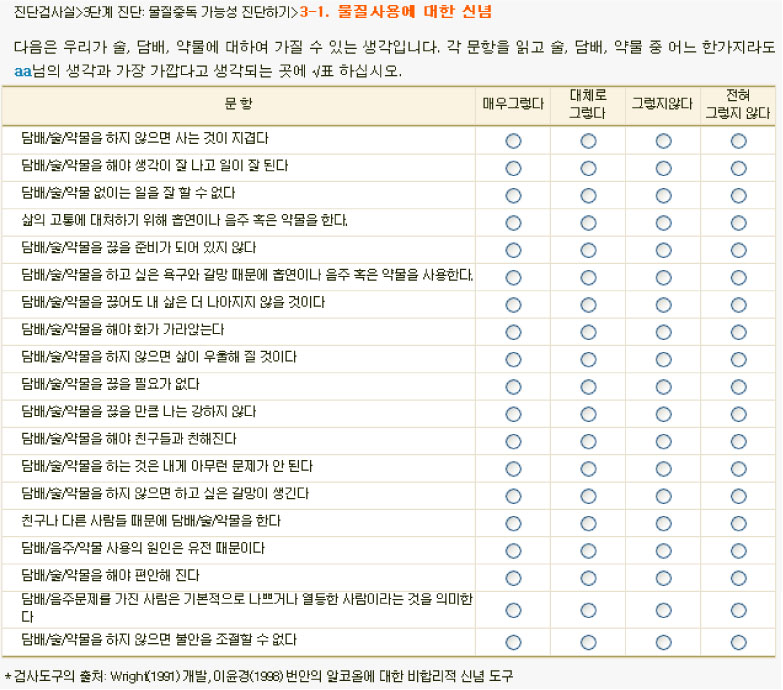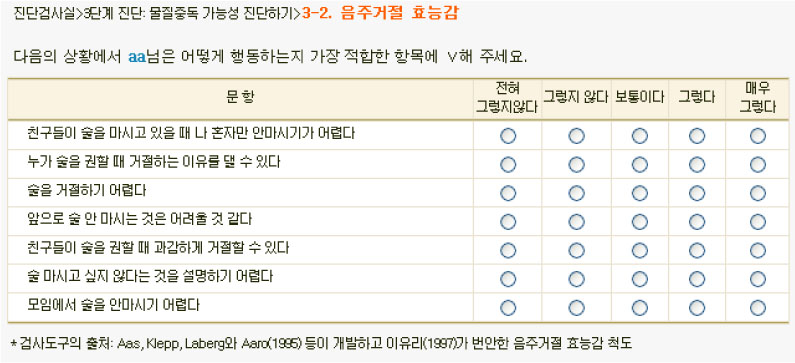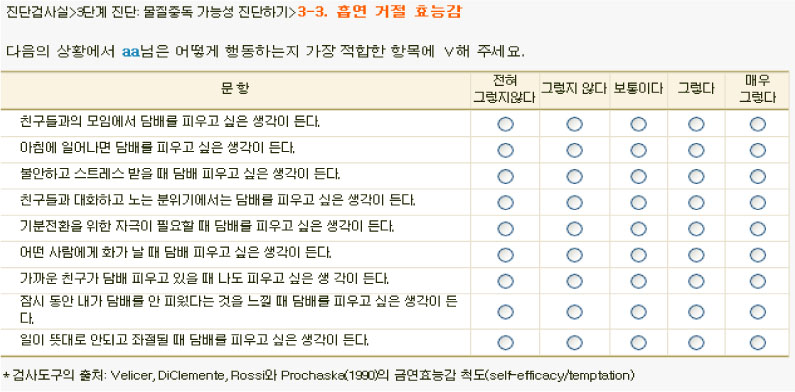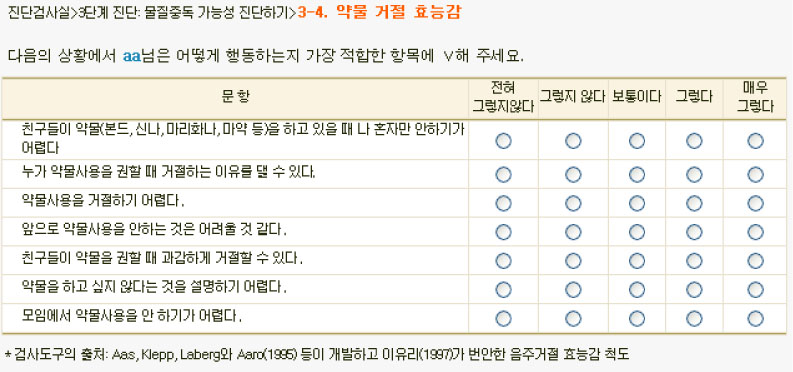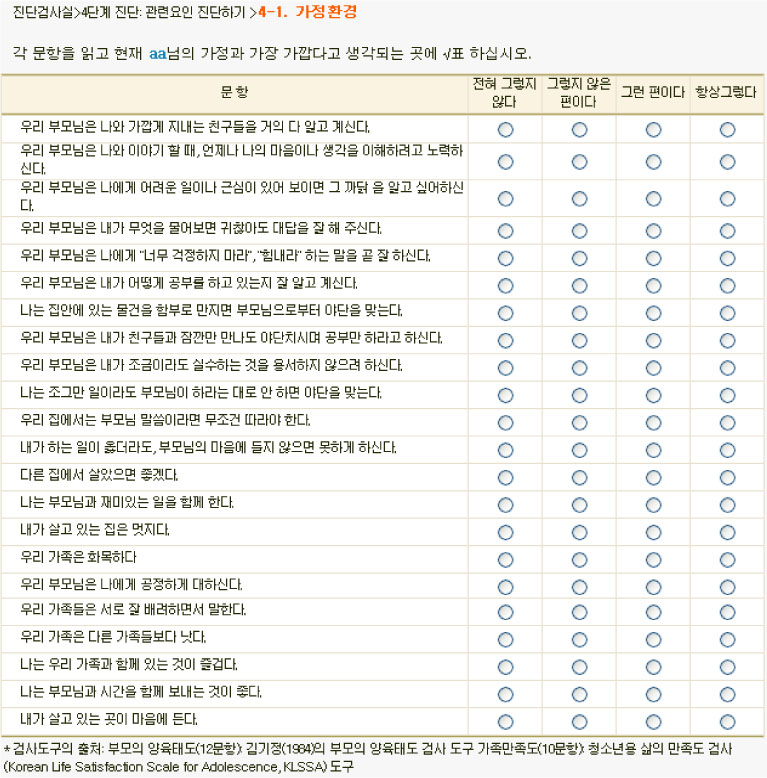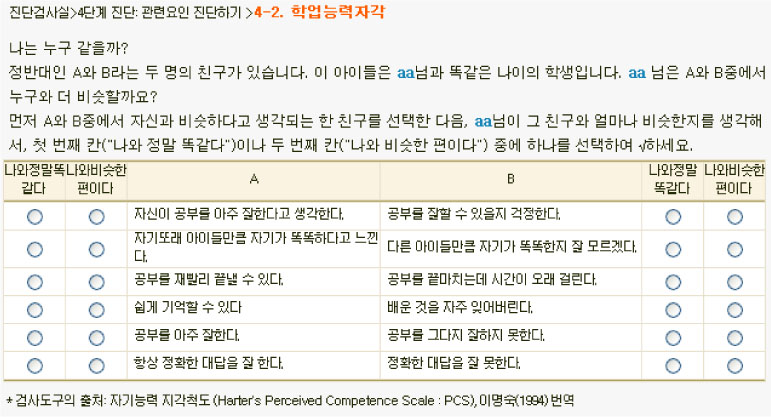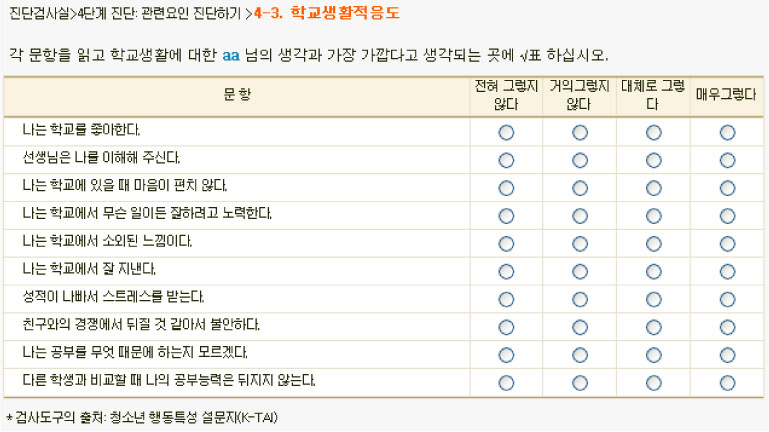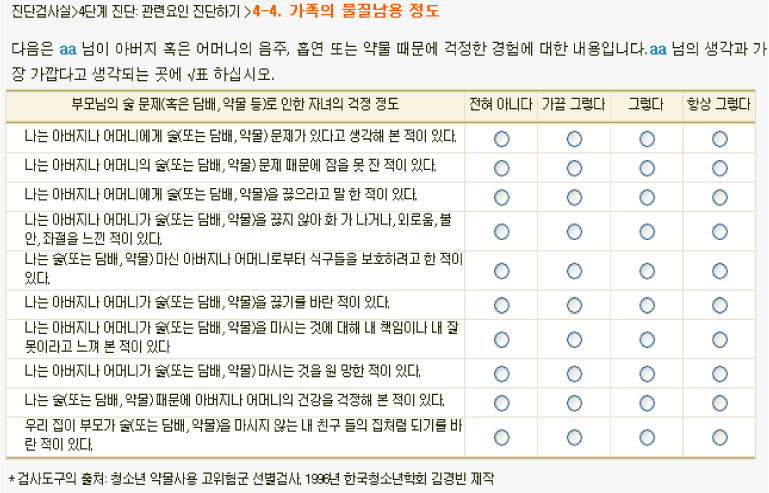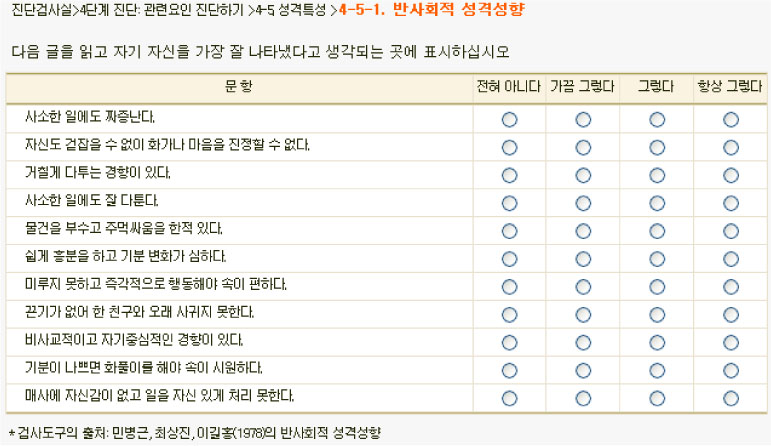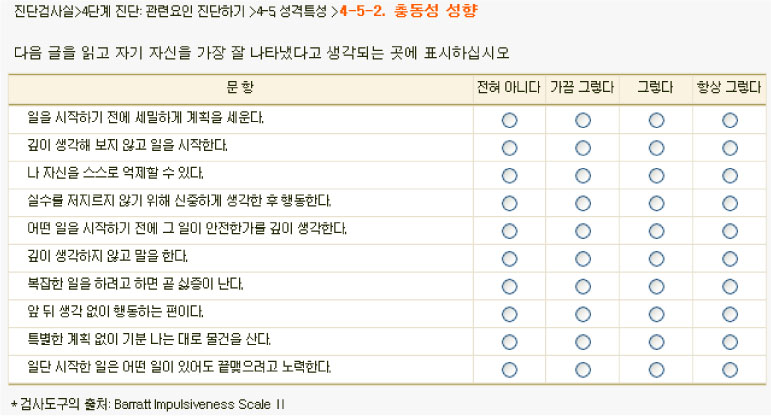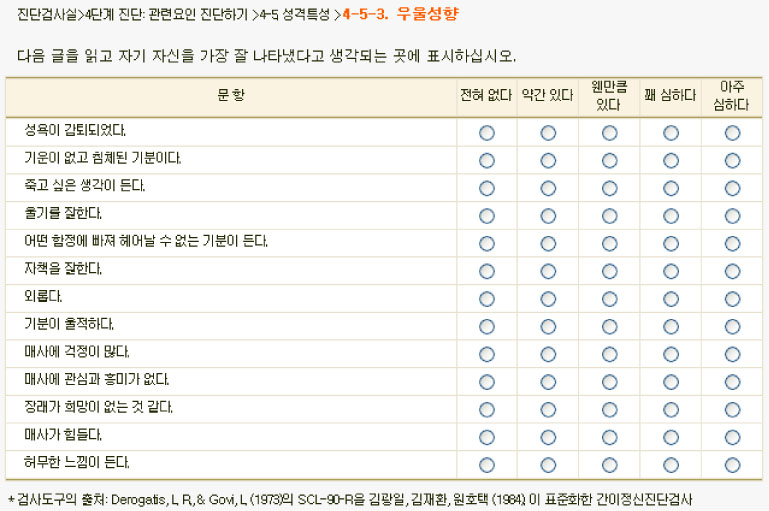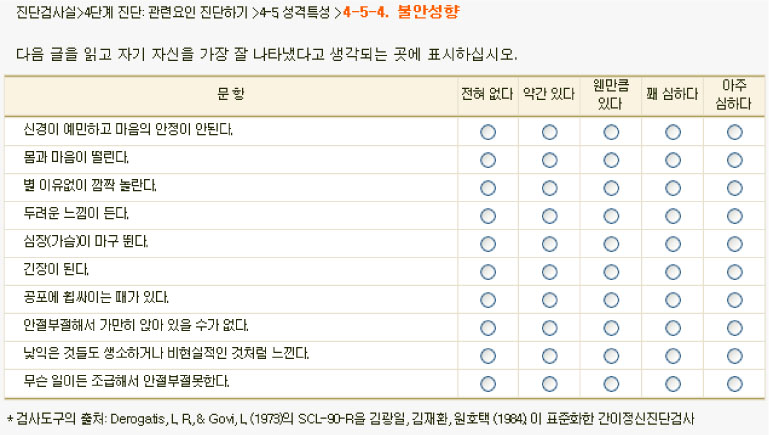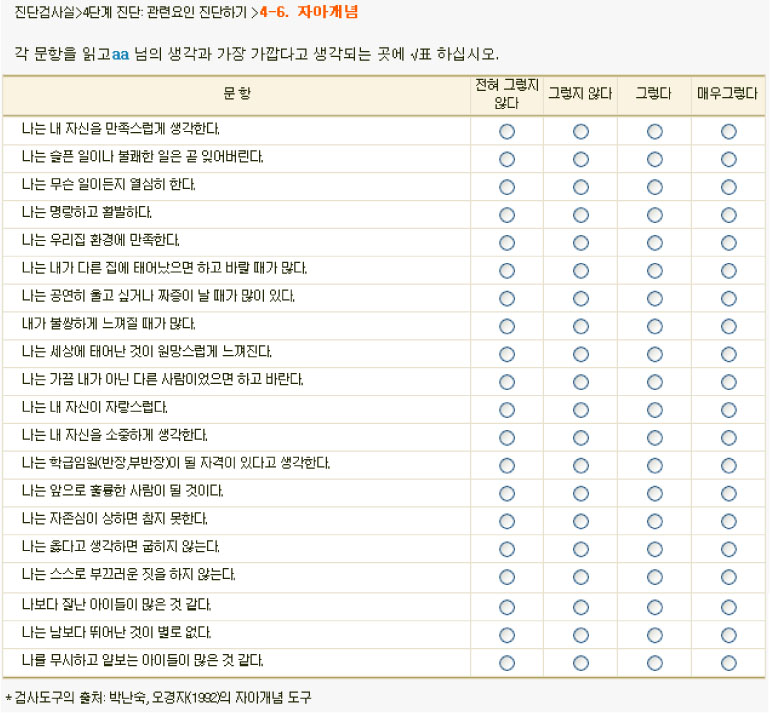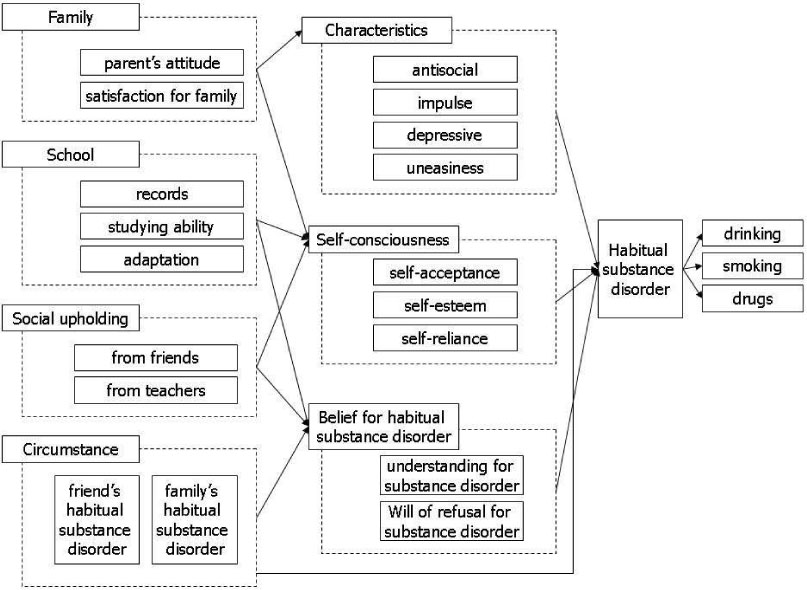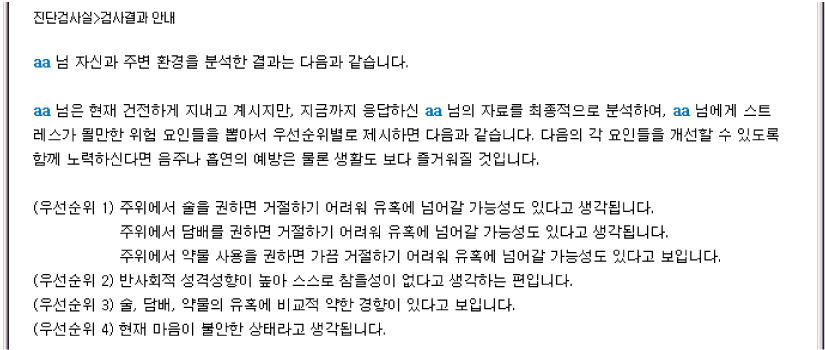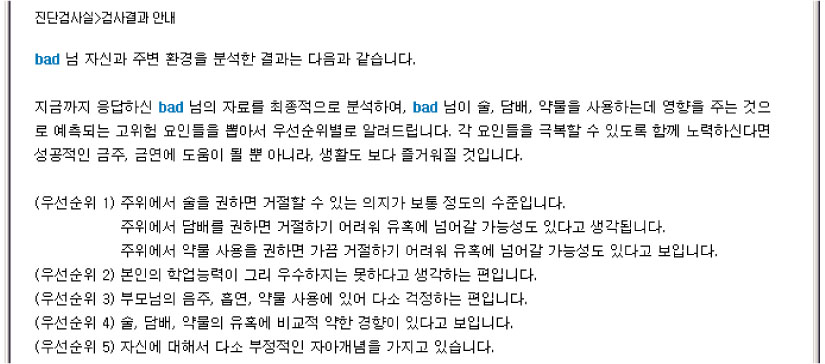J Korean Soc Med Inform.
2009 Mar;15(1):93-108.
Web-based Factor Analysis System for Prevention and Management of Habitual Substance Disorder in Adolescents
- Affiliations
-
- 1School of Electronic Eng., Kumoh National Institute of Technology, Gyeongbuk, Korea.
- 2Department of Nursing, Inje University, Busan, Korea.
- 3College of Medicine, Inje University, Busan, Korea.
- 4Department of Information and Communications Eng., UHRC, Inje University, Gyeongnam, Korea. ichwang@inje.ac.kr
Abstract
OBJECTIVE
The purpose of this study is to design the web-based dialogue expert system for preventing and managing of habitual substance disorders in adolescents.
METHODS
Research process includes the requirement analysis, making of questionnaires, actual survey, and its analysis. Based on the analysis, we designed the web-based dialogue expert system.
RESULTS
The habitual substance disorders in adolescents are variable. Our system for managing habitual substance disorders contains the diagnosis of alcoholism, nicotinism, and narcotism. And it analyzes the facts of them based the questionnaires and answer. As the results of the analysis, main reasons in order of the power of influence are belief, will of refusal, personal characteristics, family environment, and psychological personality. Our system suggests the customized solution to conquer that for each adolescent. Moreover, our system also includes the history tracking mechanism to manage the status of each teenager constantly and to make the survey and analysis information.
CONCLUSION
With our system, young boys and girls can know their seriousness of alcoholism, nicotinism, and narcotism. And they can get all possible helps through our system. This system will be the interactive and familiar way that anyone all over the world can use for overcoming problems.
Keyword
MeSH Terms
Figure
Reference
-
1. Choi JJ. A Research on Juvenile Drug Abuse - with priority given to Daejeon. 2001. 1–82. A master's thesis (Dept. of Social Walfare) of Daejeon University.2. Wright Roosevelt JR, Watts Thomas D. Alcohol and Minority Youth. Journal of Alcohol and Drug Education. 1991. 36(2):68–72.
Article3. Velicer W, DiClement CC, Rossi JS, Prochaka J, Brandenburg N. A decisional bala nce measure for assessing and predicting smoking status. Journal of Personality and Social Psychology. 1985. 48:1279–1289.
Article4. Aas H, Klepp K, Laberg JC, Aarø LE. Predicting adolescents intentions to drink alcohol. Journal of Studies on Alcohol. 1995. 56:293–299.5. Kim KJ. The Effect of Academic Achievements and Perceive Parental Attitudes on Self-concepts of Elementary and Secondary School Students. 1984. Dissertation of ChungAng University.6. Kwak KJ. Life Satisfaction of Adolescents in Terms of KLSSA. Korean Psychological Journal on Social Issues. 1995. 2(1):5–12.7. Herbert WM. Multidimensional Self-Concepts:Construct Validation of Responses by Children. American Educational Research Journal. 1990. 27(1):89–117.
Article8. Research Institute of Behavioral Science in Korea University. Handbook of Psychology(2). Hakjisa publish company. 2000. 2:197–288.9. Kim J, Kim KB, Joen HM. The Standardization Study of High Rish Group of Adolescent Drug Users Screening Test (II): Validation Study. 1998. 2(1):National Seoul Hospital.10. Joeng . Adolescents Today. 1985. Institute of Research for Korean Adolescents (Young-Sin Acadamy in Chung-Ang University).11. Barratt ES. Barratt Impulsiveness Scale, Version 11 (BIS 11). Handbook of Psychiatric Measures. 2000. Washington, DC: American Psychiatric Association;691–693.12. Lee H.S. Impulsivity Test. 1992. Seoul: Korean guidance.13. Kim KI, Kim JH, Won HT. Symptom Checklist for Simplified PsychologyDiagnostic. 1984. 1:1st Edition. ChungAng Aptitude Publishing Company;7–39.
- Full Text Links
- Actions
-
Cited
- CITED
-
- Close
- Share
- Similar articles
-
- Predictive factors of substance misuse and abuse in South Korean adolescents: a secondary data analysis of the 2021 Youth Risk Behavior Web-based Survey
- Development of a User Centered Web Site for Mental Health Management in Adolescents
- Current state of research on youth depression and suicide prevention
- Construction of the Structural Equation Model on Substance Use in Adolescents
- Substance Use and Sexual Behaviors of Adolescents in Multicultural Families in Korea

